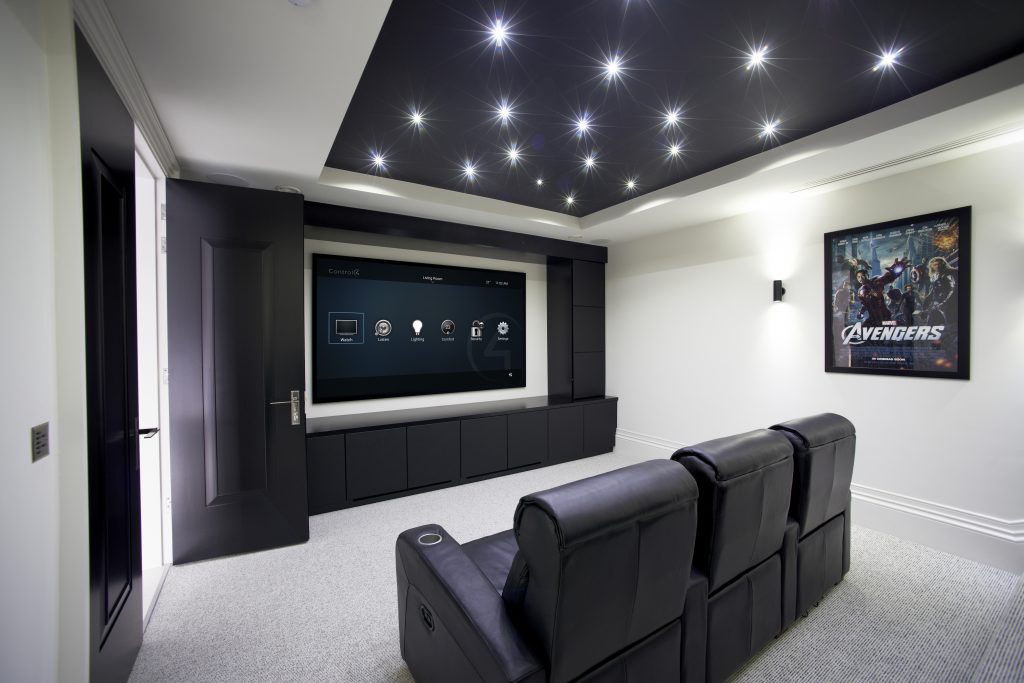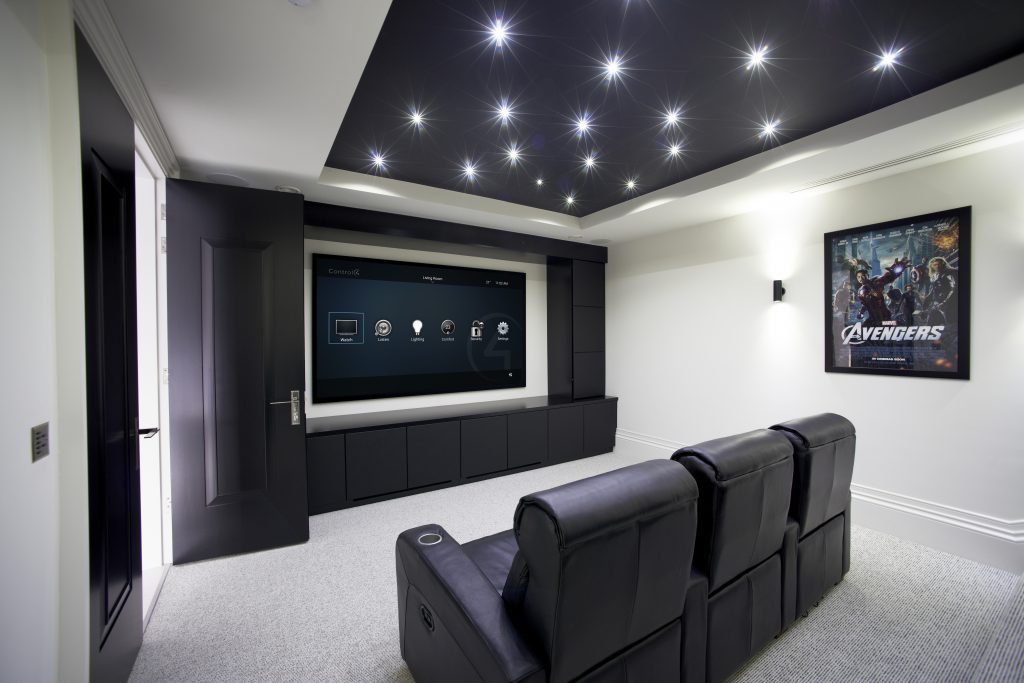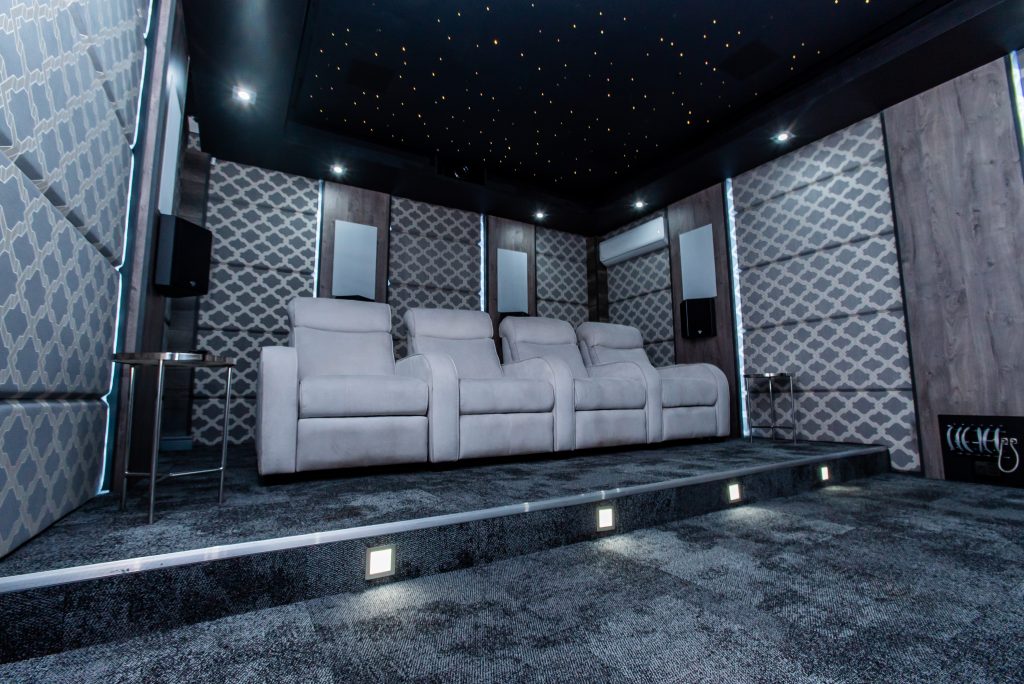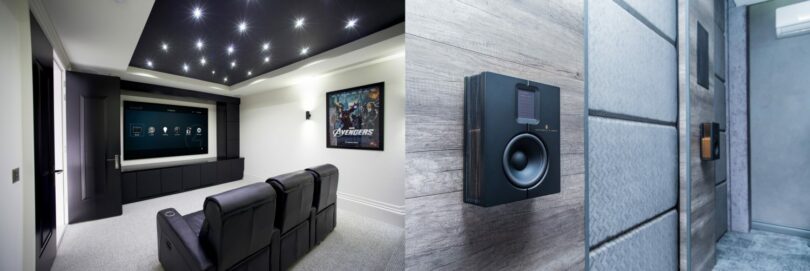The smart entertainment and automation experts at Homemation share their top tips for creating a big-screen experience in the comfort of your home:
When looking to design a big-screen experience for your own home, there are some considerations that you should keep in mind so that you get the best experience and value for money.

TV vs projector: While TVs have got a lot bigger in size in recent years, the prices of the larger TVs are still quite high when compared to a projector-based solution which can give you an image size of over 100 inches (measured diagonally) at a much more attractive price. TVs do however offer one major advantage when compared to projectors: image brightness. While the quality of even modestly priced projectors is very acceptable, the downsize of using a projector for your big-screen experience is that to get the best picture quality you would want to have the room as dark as possible, which leads us to…
Projector screens – do they matter? The short answer is YES. The projector screen can be considered analogous to the speaker in an audio system. A good-quality speaker reproduces the sound and is only as good as the amplifier and source that come before in the signal path. Similarly a good-quality projector screen will accurately reflect the image of a good-quality projector. There is more to it than this though. Projector screens come in a variety of colours and finishes and are designed to give the best picture quality based on the lighting conditions in the room. Typically in a home cinema where the lighting within the room is controlled (and typically the room is dark) you want to choose a screen with a white finish. This allows the best picture quality to be reflected back to viewer, and typically allows a wider viewing angle so that everyone gets the best image quality for the movie. On the flip side a grey-scale screen (like the Stewart Filmscreen GrayHawk and Phantom HALR) uses technology that tries to reject ambient lighting in the room to reflect only the image from the projector. While this allows you to get the best possible image quality in a room with some degree of ambient lighting, there are a few trade-offs, most notably a narrower viewing angle.

Surround sound system: A big-screen experience is only halfway there if all you have is a big screen. The experience is only complete with a sound system to match. While a good soundbar typically allows a decent audio experience (some even offer surround sound with the use of wireless speakers – such as Polk Audio’s MagniFi MAX), nothing beats the impact and scale of a proper multi-channel surround sound system driven by an AV receiver or better yet AV processor with power amplifiers. For the past few years all the rage in surround sound has been around the adoption of immersive audio, the likes of Dolby Atmos and DTS:X which is the addition of a height layer of speakers to complement the surround sound speakers positioned at ear height. This allows the surround sound system to create a truly three-dimensional sound stage to further immerse the viewer in the action. For those clients who cannot place speakers in the ceiling above them, many manufacturers offer speakers that bounce the sound off the ceiling to create the height layer of sound.
Lighting: Rounding out the experience of a great home cinema requires great lighting (or the lack thereof). For the best picture quality, using a projector is best to get the lighting as dim as possible. If you intend on building a home cinema, then added accent features like stair lights for the couch plinths are great. Star lighting for the cinema is also very popular with some lighting designers adding shooting stars that fly across the ceiling.

Control: The experience is only a good one if you are in complete control over what can sometimes be a complicated system. Control4 Home Automation systems can be configured like a universal remote control making using the system easy for the whole family. Not only does Control4 allow you to get rid of all the remotes needed to control all the audio visual devices in the home theatre, but you can also integrate items like your air conditioner, so that the temperature is always at a comfortable set point when watching your favourite movie. Lighting can also be integrated into the Control4 system so that the lighting dims when the movie starts and lights back up when pause or stop is pressed.
Visit www.homemation.co.za










Leave a Comment